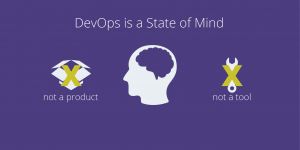Old IT models were siloed departments. The network team didn’t talk to the storage team who didn’t get drinks with the virtualization department at the local bar. At the time, storage, data center, compute and network technologies were consolidated because these technologies and the skills involved in running them were somewhat disconnected. With the growing demand for private cloud environments, these people and technologies must collaborate and eventually converge. Hyper-converged architecture alongside software-defined storage and software-defined networking are pushing limitations of consolidation and bringing cloud models to light in the new organization and communication model. The need for consolidation is coming from the demand for fast IT and a quicker time to market. However, with it comes another skillset that your organization must acquire. The long-term impact of introducing the right cloud to your IT is to drastically increase business efficiency. This is terrific for your business’s long-term goals, but when quarterly, semi-annual and annual reports must be sent to your executive board, you may find that your numbers are not what they wanted to see.
Many organizations forget that cloud migration is a process, not a flip of a switch. The reality is that very few organizations can and will adopt a 100% cloud IT model. You will more than likely maintain your current IT staff and hire a fifth resources – Cloud expert – to your team (or outside professional service), upon adoption. Hybrid cloud infrastructures are now the norm for first adopters. So how can you gain these operational efficiencies while maintaining your original three departments and adding a cloud skill set?
The Internet describes DevOps (a clipped compound of development and operations) as “a culture, movement or practice that emphasizes the collaboration and communication of both software developers and other information-technology (IT) professionals while automating the process of software delivery and infrastructure changes.” I describe it simply as – a state-of-mind. It’s not a product or a tool but an understanding on how automated business processes can make your organization more efficient.
DevOps looks at your current technology, people, and processes and finds patterns for automation and orchestration of your IT resources. It enables you to maximize your current investment and optimize your cloud adoption within your current IT model. Programming your own resources is a terrific step in minimizing costs while adopting the cloud. However, doing so internally while bringing in the cloud may be too overwhelming for you and your staff. Be mindful that developing automated programs internally may lead to politics and/or drama amongst staff weary of losing their position to automated resources. Make sure you communicate your DevOps state-of-mind and manage your staff to get the most effective strategy moving forward. I recommend speaking to DevOps experts to avoid any malpractice. Plus, it’s always good to have an outside resource providing unbiased opinions. Speak to an organization with a strong understanding of SDS and SDN that can help asses and build these automation and orchestration programs for your organization so that you can focus on gaining more efficiencies in your cloud adoption. If you haven’t discussed cloud adoption alongside DevOps, talk to an IT consultant today about first steps.

